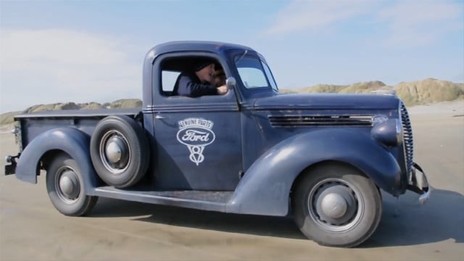AudioCulture
The noisy library of New Zealand music
Te pātaka korihi o ngā puoro o Aotearoa
The Unknown Blues
Eventually, the Hogans would follow the flow of the Oreti to Invercargill, where young Dave, full of the swagger of rock and roll, and a small-town sense of awe about the city, would find kindred souls and happen upon the rebel sound of R&B.
He fell in with a shy Marist schoolmate named Bari Fitzgerald. To Hogan, Fitzgerald must have seemed like a character out of a blues lament: leaving home at 14, just out of a Dunedin Boys Home, and driven by his own unknown blues.
Their rehearsal band was completed by Hogan's neighbour, Phil Sharman, and the “professional”, Vaughan "Pig" MacKay. MacKay, late of The Whom, was a welcome addition for his knowledge of chords and past performing experience (a drummer, he switched to lead guitar in the Blues).
For New Zealand teenagers, especially those who thought The Beatles and The Shadows tame, 1965 would bring a rude (but welcome) surprise in the form of the two most aggressive bands from the emerging London R&B scene. It was the year The Rolling Stones and The Pretty Things toured New Zealand and played Invercargill.
Hogan, already honking away on a blues harp after radio exposure to ‘Not Fade Away’, The Rolling Stones' first local release, greeted Mick, Keef, and Co at Invercargill Airport, his understanding mother in tow, and school uniform intact. It was a low key welcome and few fans turned up allowing Hogan to bag some autographs.
Later, that day, he cornered them again in a city milk bar and added Keith, Mick, and Charlie's signature. Keith took some time to chat to the young fan, wondering aloud if he could live in a town like Invercargill. Hogan: "He said it was the first time in a year they'd been able to walk around without being recognised. People stood four feet back like they were a travelling freak show."
Not that freak shows ever lack for crowds and neither did The Rolling Stones and Roy Orbison double bill at the Civic Theatre. Looking back, Hogan remembers most people were there to see Roy Orbison with a contingent for Ray Columbus and The Invaders, who featured Wally Scott and Jimmy Hill – Mataura boys from just up the road.
The Stones stunned the audience with savage treatments of ‘Not Fade Away’, ‘Around and Around’, and other tracks from their first album. Hogan was in the front row while Fitzgerald had an even better view from above the stage. Earlier that day, he simply walked in the theatre's back door and, finding the theatre empty had a bang on The Stones' guitars, which were sitting on the stage.
They appropriated a title off The Pretty Things first album and named themselves The Unknown Blues.
In August, a second batch of marauding corrupters hit town. Hogan: "They were even wilder, their hair was longer and outrageous, and I ended up liking that better." The Pretty Things were anything but pretty, ripping up hotel rooms, stumbling drunk around the stage and generally not bothered much about convention.
That was it for Hogan and his mates. They appropriated a title off The Pretty Things first album and named themselves The Unknown Blues, then set about knocking together a set of Stones, Downliners Sect, Graham Bond Organisation, and Pretty Things numbers and growing their hair long.
Hogan, sick of hassles at school about his hair, quit, and burned his school uniform. The blues finally had him and 40 years later he'd still be a practitioner of the moody music from another murky South. When cool dressing John "Rocket" Hancock was recruited as bassist – more for his looks than ability ("Pig" taught him) – the first Unknown Blues line-up was complete.
The embryonic band's practices at their mate's Roger and David Garrick's house often became informal gigs. Fuelled by beer, they were attended by the band's clique,and friends from a local bikie gang, The Antarctic Angels.
By Christmas, they were ready to venture into the public gaze, scoring a gig with the tame Syn and The Answer on December 23, 1966 at the Waverley Bible Class Dance at the Waverley Hall in Herbert St.
Dave Hogan: "I was feeling incredibly nervous. I was quite pissed. We lasted four songs – ‘Judgement Day’, ‘Road Runner’, ‘As Tears Go By’, and ‘In The Midnight Hour’. During the first song I was shaking maracas and chucked them over the audience against the back wall where they shattered.
“When we cranked it up wild and raw, and the local minister told us to turn it down. Vaughan told the minister to fuck off and he tried to chuck us out." So the band left, leaving Hogan to wail out a harp-led ‘Parchman Farm’.
Local notoriety was sealed and the work offers came rushing in.
Local notoriety was sealed and the work offers came rushing in. Now they would be billed as the "wild savage Unknown Blues," "Invercargill's wildest group”, and other variations on this theme. The local Saturday News Sports paper loved them and the band would get extensive coverage for their day.
Soon after their first show, Phil Sharman bowed out and was replaced by Keith “Wombie” Mason, late of local pop act The Drifters. This line-up secured a "freak show spot" on the Big Beat '67 charity tour, which took in most of the small towns around Southland. And although there was an absence of Pretty Things-inspired behaviour – Bari managing to get thrown off the Wanganella at Deep Cove in the inland lakes area for unruly drunkenness excepted – reviews were surprisingly good, with at least one reviewer coming to grips with the wild five piece.
”The scene stealers were undoubtedly the rhythm and blues group, The Unknown Blues, five young Invercargill men whose unpredictable, noisy, demonstrative performance was the feature of the show. Their songs, ‘Too Much Monkey Business’, ‘The Midnight Hour’, ‘Land of a Thousand Faces’ (sic), and ‘I'm A Man’ received a mixed reception from the responsive audience which gave the artists much applause and encouragement.”
After the tour The Unknown Blues continued playing Southland's small country towns, including Otautau, Gore, Riverton and the Lakes District, to sometimes hostile, sometimes just plain bewildered crowds. They were also playing regularly around Invercargill and organising their own dances, their short romance with local promoters over.
Hogan: "We hired halls, printed tickets and called ourselves the Southern Blues League so that the shows became private functions where booze was allowed. We made a bloody fortune."
They were also a popular support band for touring acts including The La De Da’s, The Underdogs, and Sandy Edmonds.
The shows regaled under such hip titles as Kleeks Klook, Hullabaloo '66 and Beat Spectacular – one show being advertised as "a love-in with flowers, flashing lights, and plenty of gutsy numbers." Not that they'd turned psychedelic. Apart from a few Cream and Hendrix numbers they remained a hardcore blues band, drawing their later sets from T-Bone Walker, Junior Wells, Muddy Waters, and Buddy Guy, and the late 1960s white blues of Fleetwood Mac, John Mayall, and Chicken Shack. They were also a popular support band for touring acts including The La De Da’s, The Underdogs, and Sandy Edmonds.
They may not have been the most technically proficient band in the country, but live, the Blues could generally hold their own. Dave Hogan describes the band's sound: "Vaughan had wider tastes, but he liked blues guitarists like Dick Taylor, Keith Richard, Eric Clapton, B.B. King – guys like that – very pro blues players. Bari was one of the best rhythm guitarists I've ever heard. He played like a drummer in his timing and sense of rhythm. He didn't play fancy leads. He'd just sit on a chord and give great guts – a big part of the sound."
Their reputation soon spread northward and the band became a hot draw in Dunedin.
Up front would be Hogan, honking away under his long hair on harp, and singing while behind him Mason and Hancock would be pounding out the raw beat. All of them dressed in their version of swinging London fashion. Their reputation soon spread northward and the band became a hot draw in Dunedin, the nearest provincial centre, where they played Sunset Strip, the Agricultural Hall, and R&B bastion, The Cellar Club.
At their peak, they could pack out the swirling psychedelic decorated basement club, playing with local fellow travellers, The Third Chapter and The PIL. One memorable YMCA concert was filmed showing Hancock smashing a redundant semi-acoustic bass, Who-style, in a blistering finale to a hot show. They were not asked back.
Further up the island they played the Downtown club in Timaru, and Sweethearts in Christchurch. Hogan, long a fan of Chants R&B and the city's Stage Door club in Hereford Lane, had been travelling up to Christchurch to see the band up until their late 1966 departure for Melbourne, forming a link that would see the “long hair” fans of both bands making regular visits to each other's city.
By the time The Unknown Blues hit Christchurch in late 1967 and early 1968, the Stage Door was closed, but luckily for Hogan, he'd already made a valuable contact there who would give the Blues their first opportunity to record.
Barry Coburn was a young Philips Records rep. He'd have a long career in rock management ahead of him with Split Enz, but in early May 1969, he was arranging the Blues first recording session for Viking Records at Robbins Studios. The band drew on their live set choosing two covers, a version of The Ansley Dunbar Retaliation's ‘Warning’ (originally released on the ultra-hip Blue Horizon label in 1967), and John Mayall's ‘Suspicions’. The recordings, complete with horn section as was then in vogue, weren't to the band's tastes, and were never released commercially.
The line-up that recorded ‘Suspicions’ and ‘Warning’ included Martin Wood on bass. Wood was an English immigrant who'd previously played in Portsmouth's Ash before immigrating to Invercargill, and forming The Incense, one of a number of interesting bands thrown up in The Unknown Blues' wake, which included The Judas Embrace (ex-Whom members Ross Grenfell and Brian Lamb), and Society's Debt. Wood, in turn, left to be replaced on bass by original drummer, Phil Sharman. Along the way another ex-pat Pom, Chris Smith, who played slide guitar and harp, joined, and left.
"Better than the Viking sessions," says Hogan, was their version of Elmore James' ‘Goodbye Baby’, recorded at Invercargill radio station, 4ZA, after the band placed second at the city's 1969 Battle of the Bands. By then, the end was nigh, and the "little brotherhood that could never be penetrated by anyone else”, went their separate ways in June 1970.
Hogan moved to Melbourne, chasing the teenage years he'd lost as a performing musician, and Mason went too, while MacKay and Fitzgerald stayed in Invercargill and formed Powerhouse. Both moved to Australia in the 1970s.
Bari Fitzgerald returned to Invercargill in the early 1980s where he now works at the Alliance Freezing Works, fixes up Ford V8s, and prowls the second hand shops looking for obscure blues, rock and roll, and gospel records to add to his large collection. He played briefly in a rockabilly band called Twang Bar Banger.
Dave Hogan, still resident in Melbourne, blows a mean harp for pre-war blues style outfit The Paramount Trio, while also playing in Southern Lightning, and releasing records with both bands to acclaim in Australia. He recently formed Blues Hangover with original Pretty Things bass player John Stax.
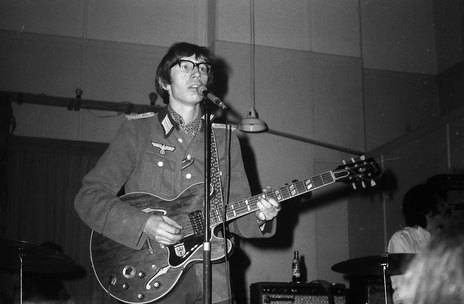
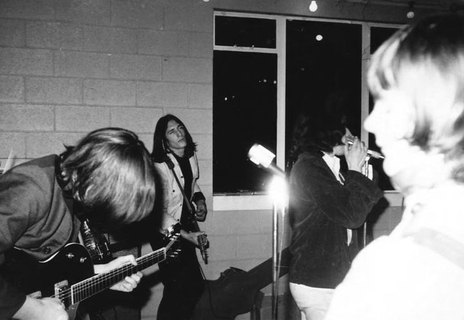
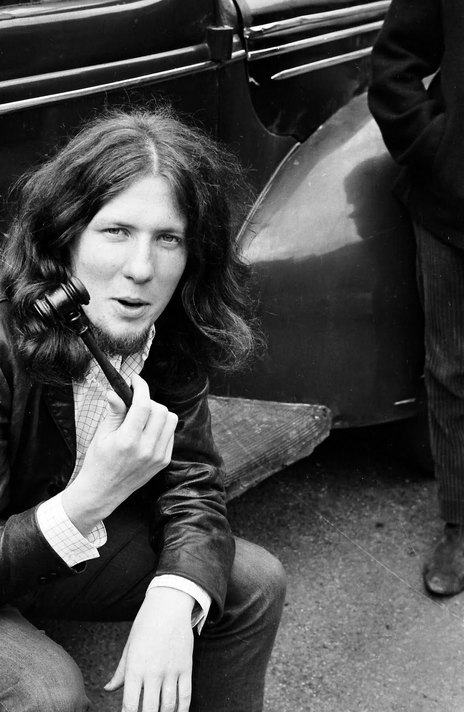
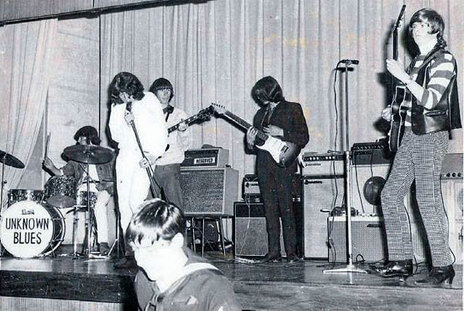
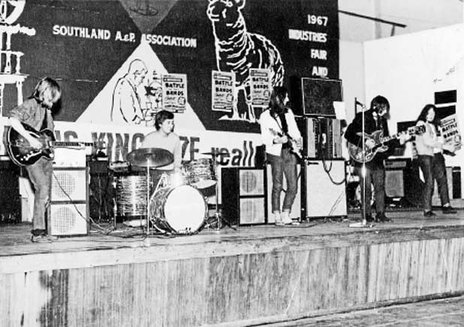
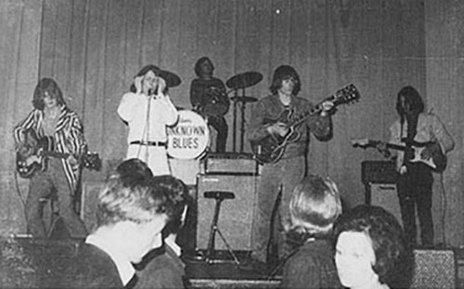
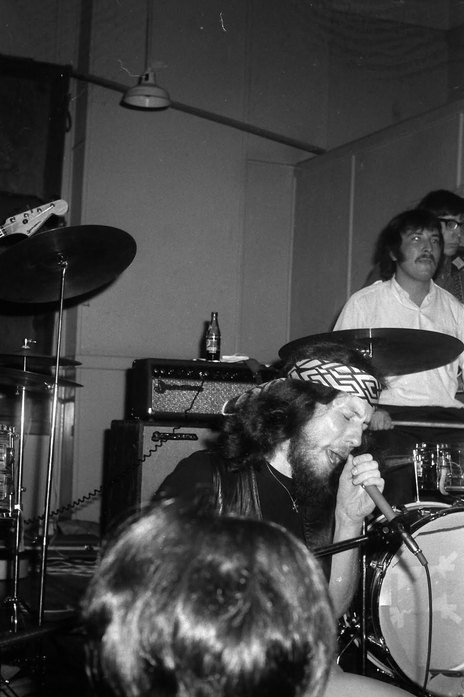
Dave Hogan - Vocals, harmonica
Bari Fitzgerald - guitar
Vaughan MacKay - guitar
John Hancock - bass
Martin Wood - bass
Phil Sharman - drums, bass
Keith Mason - drums
Chris Smith - guitar, harmonica
Visit our sister site
NZ On ScreenMade with funding from
NZ On Air
